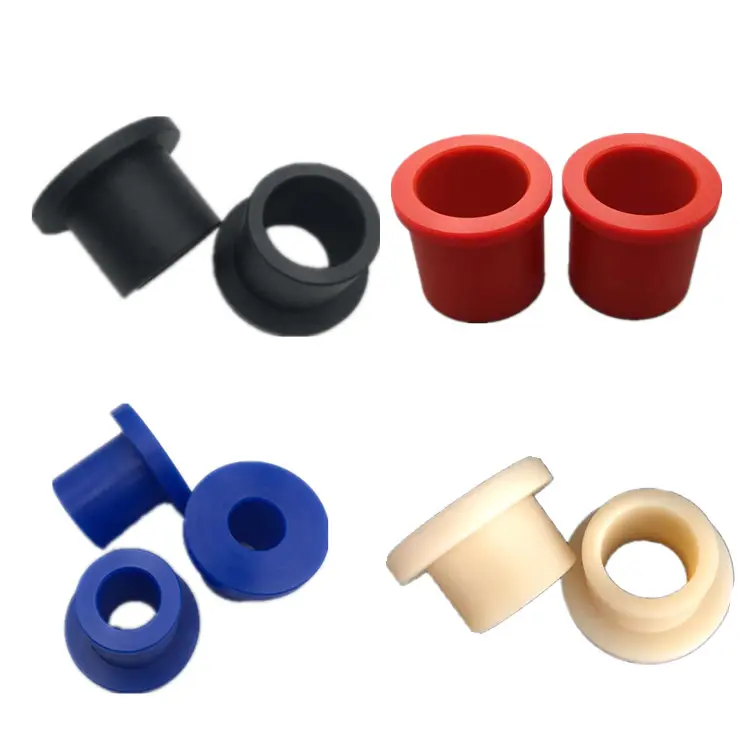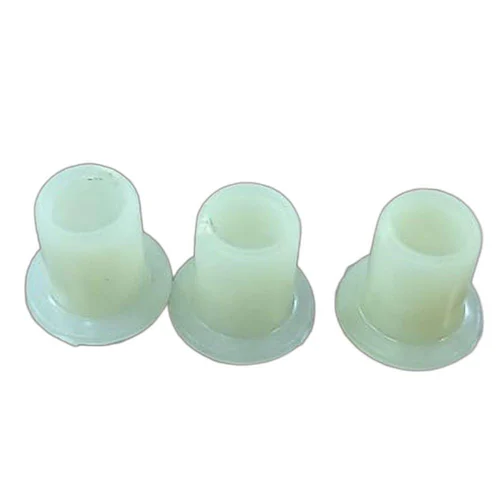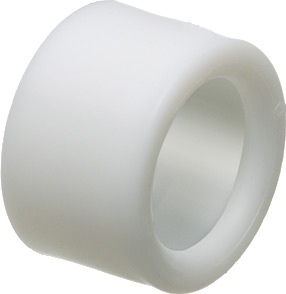
Can I find information on alternatives to nylon bushings for specific industrial applications?
Yes, you can find information on alternatives to nylon bushings for specific industrial applications by considering the following sources:
1. Manufacturer Websites:
– Visit the websites of manufacturers that specialize in industrial components or bushings. They often provide detailed information about their product offerings, including alternative materials to nylon bushings.
– Look for sections on their websites that discuss different materials, specifications, and applications. These sections may highlight alternative materials such as metal, plastic, composite, or other types of bushings suitable for specific industrial applications.
2. Industry Publications and Journals:
– Industry publications and journals dedicated to specific industrial sectors often feature articles or studies that discuss different types of bushings and their applications.
– Explore relevant publications in your industry to find articles, case studies, or technical papers that discuss alternative bushing materials. These resources can provide insights into the performance, benefits, and limitations of different materials in specific industrial applications.
3. Consult with Industry Experts:
– Reach out to industry experts, engineers, or consultants who specialize in the specific industrial application you are interested in. They can provide valuable insights and recommendations based on their expertise and experience.
– Attend industry conferences, trade shows, or seminars where you can network with professionals and experts in the field. Engaging in discussions and seeking advice from knowledgeable individuals can help you discover alternative bushing materials suitable for your specific application.
4. Online Forums and Communities:
– Participate in online forums, communities, or discussion groups related to your industry or specific industrial applications. These platforms provide opportunities to connect with professionals, share experiences, and seek recommendations on alternative bushing materials.
– Post inquiries or questions about alternative bushing materials, specifying your industrial application and requirements. Members of the community may share their insights, experiences, or suggestions based on their own knowledge and expertise.
5. Consult with Suppliers and Distributors:
– Contact suppliers and distributors of industrial components, including bushings, and inquire about alternative materials suitable for your specific application.
– Suppliers and distributors often have extensive product knowledge and can provide guidance on alternative bushing materials based on your requirements, such as load capacity, operating conditions, or environmental factors.
– Inquire about materials such as bronze, stainless steel, PTFE (polytetrafluoroethylene), composite materials, or other plastics that may be suitable alternatives to nylon bushings.
When researching alternatives to nylon bushings for specific industrial applications, consider factors such as material properties, compatibility with the application, load capacity, temperature resistance, lubrication requirements, and overall performance.
By exploring these sources and consulting with experts, you can gather valuable information and make informed decisions about the most suitable alternative bushing materials for your specific industrial application.

Are there specific guidelines for lubricating nylon bushings, and what lubricants are recommended?
If you are looking for specific guidelines on lubricating nylon bushings and recommendations for lubricants, here’s a detailed explanation:
1. Lubrication Guidelines for Nylon Bushings:
– Nylon bushings are often self-lubricating due to the inherent properties of the material. However, in certain applications or operating conditions, additional lubrication may be beneficial to reduce friction, wear, and noise.
– Before applying lubrication, assess the specific requirements of your application and consult the manufacturer’s recommendations or technical documentation for the nylon bushings. Some manufacturers may have specific guidelines or restrictions regarding lubrication.
– Consider the operating temperature range and environmental conditions of your application. High temperatures or harsh environments may require lubricants with specialized properties, while low temperatures may affect the viscosity and effectiveness of certain lubricants.
– Take into account the speed, load, and movement characteristics of the application. Higher speeds or heavier loads may necessitate the use of lubricants with higher viscosity or increased load-bearing capacity.
– Evaluate the potential for contamination or interaction with other substances in the application. Some lubricants may be incompatible with certain chemicals or materials present in the environment, leading to degradation or reduced performance of the nylon bushings.
2. Recommended Lubricants for Nylon Bushings:
– Dry Lubricants: Dry lubricants, such as PTFE (polytetrafluoroethylene) or graphite-based lubricants, are commonly recommended for nylon bushings. These lubricants create a thin film on the surface of the bushings, reducing friction and wear without attracting dust or contaminants.
– Silicone-Based Lubricants: Silicone-based lubricants are another option for nylon bushings. They provide good lubricity and can withstand a wide temperature range. Silicone lubricants are often used in applications where water resistance is required.
– Molybdenum Disulfide (MoS2) Lubricants: MoS2 lubricants are suitable for nylon bushings subjected to heavy loads or high pressures. These lubricants have excellent load-carrying capabilities and can withstand extreme conditions.
– PTFE-Based Lubricants: Lubricants containing PTFE particles or additives can provide enhanced lubrication for nylon bushings. PTFE helps reduce friction and wear, resulting in improved performance and extended service life.
– Synthetic Oils: Some synthetic oils, such as polyalphaolefin (PAO) or polyalkylene glycol (PAG) oils, can be used as lubricants for nylon bushings. These oils offer good lubricity and thermal stability.
– Avoid Petroleum-Based Lubricants: It is generally recommended to avoid petroleum-based lubricants, such as mineral oils or greases, as they can cause swelling or degradation of nylon materials.
– Follow Manufacturer Recommendations: Always refer to the manufacturer’s guidelines or technical documentation for specific lubricant recommendations. Manufacturers may provide their own branded lubricants or offer guidance on compatible lubricants for their nylon bushings.
– Proper Application: When applying lubricant to nylon bushings, follow the manufacturer’s instructions. Apply the lubricant sparingly and distribute it evenly across the bushing surface. Excessive lubrication can attract dust or contaminants, leading to potential issues.
– Regular Maintenance: Monitor the performance of the nylon bushings and reapply lubrication as needed. Regular inspection and maintenance can help identify any signs of wear or inadequate lubrication, allowing for timely intervention.
3. Consult with Manufacturers or Lubrication Experts:
– If you have specific concerns or unique operating conditions, it is advisable to consult with the manufacturer of the nylon bushings or seek advice from lubrication experts. They can provide tailored recommendations based on their expertise and knowledge of the specific application requirements.
– Manufacturers may offer technical support or have dedicated resources to assist customers with lubrication-related inquiries. Contact their customer service or technical support departments for guidance.
By following the lubrication guidelines provided by the manufacturer, selecting appropriate lubricants such as dry lubricants, silicone-based lubricants, MoS2 lubricants, PTFE-based lubricants, or synthetic oils, and consulting with experts when necessary, you can ensure proper lubrication of nylon bushings and optimize their performance in your application.

Are there different types of nylon materials used in manufacturing nylon bushings, and how do they impact performance?
Yes, there are different types of nylon materials used in manufacturing nylon bushings, and they can have varying impacts on performance. Here’s a detailed explanation:
1. Nylon 6:
– Nylon 6, also known as polyamide 6 (PA6), is a common type of nylon material used in manufacturing bushings. It offers good mechanical strength, toughness, and wear resistance.
– Nylon 6 bushings provide reliable performance in various applications, particularly those with moderate loads and operating conditions. They are cost-effective and widely available.
2. Nylon 66:
– Nylon 66, or polyamide 66 (PA66), is another popular nylon material used for bushing manufacturing. It has similar properties to Nylon 6 but with enhanced strength, stiffness, and heat resistance.
– Nylon 66 bushings exhibit improved dimensional stability and resistance to deformation under load, making them suitable for applications with higher loads or more demanding operating conditions.
3. Heat-Stabilized Nylon:
– Heat-stabilized nylon materials, such as Nylon 6/6 or PA66 with added heat stabilizers, are specifically formulated to provide increased resistance to elevated temperatures.
– These heat-stabilized nylon bushings can withstand higher temperature ranges without significant loss of mechanical properties or dimensional stability. They are suitable for applications where thermal resistance is a critical requirement.
4. Glass-Filled Nylon:
– Glass-filled nylon, also referred to as reinforced nylon, is a type of nylon material that is reinforced with glass fibers. The addition of glass fibers improves the strength, stiffness, and dimensional stability of the nylon.
– Glass-filled nylon bushings offer enhanced load-bearing capabilities, improved wear resistance, and reduced creep under heavy loads. They are commonly used in applications that require higher strength and rigidity.
5. Molybdenum Disulfide (MoS2) Filled Nylon:
– MoS2 is a solid lubricant that can be added to nylon materials to enhance their self-lubricating properties. Nylon bushings with MoS2 fillers provide improved friction and wear characteristics.
– MoS2-filled nylon bushings are suitable for applications where additional lubrication may be limited or impractical. They help reduce friction, minimize wear, and extend the lifespan of the bushing and mating parts.
6. Other Specialty Nylon Materials:
– There are various other specialty nylon materials available for specific applications. For example, nylon materials with enhanced chemical resistance, electrical conductivity, or low friction properties can be used in specialized bushing applications.
– These specialty nylon bushings cater to specific performance requirements and can be selected based on the unique needs of the application.
The choice of nylon material for manufacturing bushings depends on the specific application requirements, including load capacity, operating temperature, wear resistance, dimensional stability, and cost considerations. It is important to select the appropriate nylon material that can meet the performance demands of the application and ensure optimal functionality and durability of the bushings.


editor by CX 2024-02-19